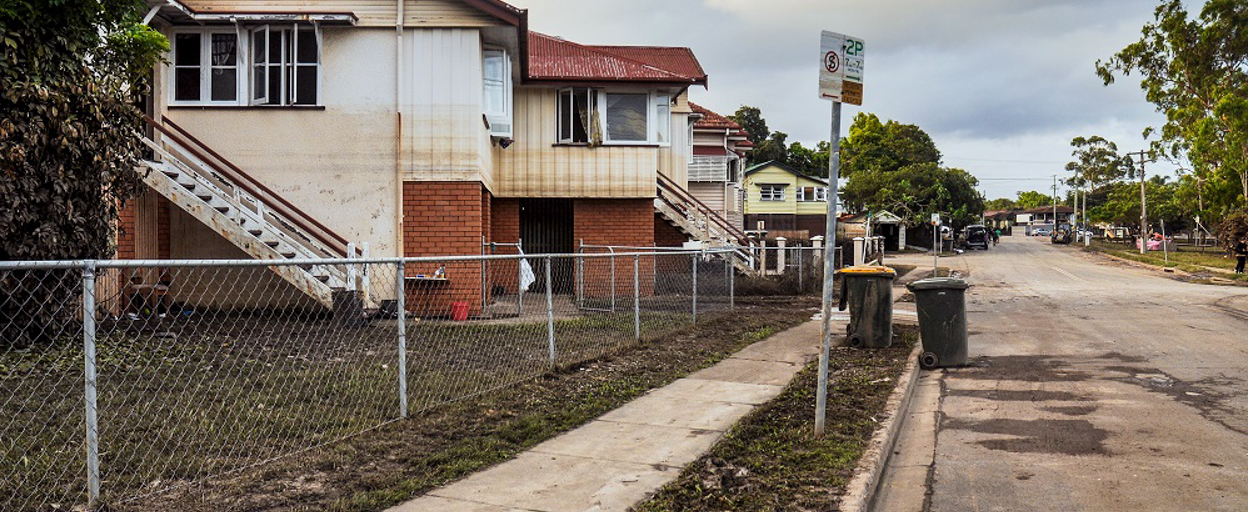- 22 Jan 2024
- 4 min read
- By Workplace Health and Safety Queensland
Cleaning or removing asbestos after floods and storms
Homeowners, lessors, business owners and volunteers cleaning up after floods, storms and other natural disasters should be aware of where asbestos can be found in buildings and how to work with it safely.
Buildings built before 1990 may contain asbestos materials. Removal of more than 10m² of asbestos materials must be done by a licensed asbestos removalist. Information on common locations of material containing asbestos and other resources is available from asbestos.qld.gov.au.
General household debris, such as kitchen bench tops, chests, wardrobes, shelves and cabinets, are unlikely to contain asbestos and can be disposed of without any concern with general rubbish.
Points to consider
- Avoid removing asbestos materials unless necessary. Only remove asbestos materials that are already broken and dislodged.
- Avoid breaking asbestos materials.
- Asbestos roofs must not be cleaned using high pressure water cleaners or water blasters. More information on cleaning asbestos cement roofs.
- Avoid walking on corrugated asbestos roofs as they may collapse.
- Avoid using high pressure water to clean the surface of any asbestos materials.
- Other surfaces containing asbestos materials such as walls should be cleaned using water hoses or by hand.
- Regularly check the surface of the material you are cleaning to ensure it is not being damaged.
- Do not use power tools or any abrasive materials (e.g. sanders) on asbestos materials.
- Do not put asbestos waste into bins or with items for kerbside collection.
In all situations
- Turn off all electricity to your work area before starting work.
- Make sure asbestos materials are always kept damp when you’re working with it.
Cleaning asbestos materials
- Asbestos materials can be cleaned with soapy water and a cloth or sponge or light scrubbing (e.g. soft brush or broom) or with a garden hose.
- Regularly check the surface of the material you are cleaning to make sure it is not being damaged. If damage is occurring, clean more gently.
Picking up pieces of asbestos material
- If not already wet, wet the pieces with water.
- Pick up the pieces and place them into a thick plastic bag and place this bag into another bag (double bagging). Seal the bag opening with tape or a knot.
- Label the outer bag: Caution – Asbestos Do not open or damage bag. Do not inhale dust.
- Contact your local council to find out how you can dispose of the waste safely.
Removing 10m2 or less of asbestos materials
- Asbestos: A guide for minor renovation provides information on the equipment you need, how to prepare your work area, removing the asbestos materials and how to clean up.
Removing more than 10m2 of asbestos materials
- You must either obtain an asbestos removal certificate or engage a licensed asbestos contractor.
- Call 13 QGOV (13 74 68) to get a certificate or engage a licensed contractor.
Contact us
For residents and property owners:
- concerned about asbestos related health issues, contact Queensland Health on 13 HEALTH (13 43 25 84).
- wanting advice on safe cleanup of asbestos materials, visit asbestos.qld.gov.au or call 13 QGOV (13 74 68).
Contact your local council for disposal of asbestos materials.
For more on making your workplace safe after floods and storms, contact Workplace Health and Safety Queensland on 1300 362 128.
Read more about asbestos: Asbestos safety alert: water blasting roofs could prove costly.
Or browse our suite of property management articles.
You may also like
View All Articles
View All Articles


Start your Real Estate Career
Need help? 1300 697 347 or contact us




